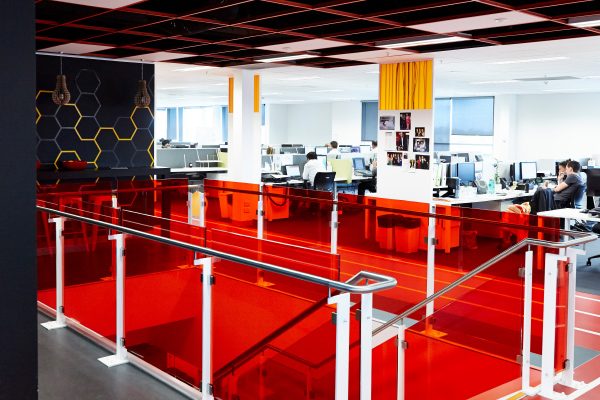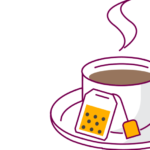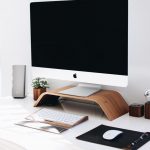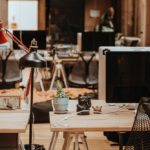The greatest Australian workspaces of 2018

This jobs market crunch is pushing Australian employers to work even harder to attract and retain top talent. And a big part of that push comes down to the workspace environment.
Discover how eight Australian workspaces are pushing the boundaries in design to attract top talent.
Canva
Canva set out to create a space where everyone loves coming to work. The workspace in Surry Hills is big, open, collaborative and inhabited by dogs almost as much as it is by humans. There’s a bar on site and an in-house chef, who prepares both breakfast and lunch for all employees.
There’s ergonomic, adjustable chairs and standing desks and more casual, relaxed workspaces designed like living rooms with bean bags, private mezzanines, couches as well as solo work stations for those wanting a little more privacy.
CEO of the graphic design tool company Melanie Perkins set out to maintain and build a healthy workspace culture, which starts with the building design, she says.
“The ground floor consists of a dining area filled with long communal tables and there’s a stage for events and company meetings. We’ve also got arcade games and a rock climbing wall and offer our employees flexible working options and spaces to encourage balance,” Perkins says.

MullenLowe Profero
This Sydney digital agency is housed inside a Victorian industrial building that dates back to 1889.
The building has a fascinating history, starting life as a tobacco factory and then being used by St Margaret’s hospital as a post-war ward, before being turned into a machinery factory.
The Surry Hills space has undergone a process of adaptive reuse with its original timber-panelled windows, exposed brick and cast-iron columns retained throughout. The fit-out of the 550sq-metre space respects the historical significance of these features, enhancing the interior with modern elements that take their cues from the art deco era.
“Working with our design partner, TomMarkHenry, our goal was to create a work environment that reflected spaces people like to spend time in, taking inspiration from cafes, bars and restaurants,” head of product Ashadi Hopper says.
“The fit-out plays homage to this history, and enhances a number of art deco features including cast iron columns and leadlight windows which we created new work spaces around.
“It really is unlike anything else and attracts a great deal of interest from passers-by who often mistake it for a bar – or just use it as an excuse to wander in,” Hopper says.
The Commons
This cool co-working space was created in a bid to ensure people achieve happiness in the workplace and to redefine the meaning of a day at work.
With thoughtful consideration to the way people work, the founders created a space with a harmonious marriage of the flexibility of today’s work style and the needs of the modern individual.
CEO Cliff Ho says designers sought to build a space where members could feel calm and inspired and be productive and creative. “The Commons is built on the idea that placing a diverse range of mindfully considered companies at different stages, under the one roof, creates an environment conducive to collaboration, growth and innovation.
“With this mission in mind, our spaces are filled to create mutually beneficial relationships across our community. After extensive research, we’ve designed an environment that is catered to people’s various moods and needs.”
There are three locations in Melbourne and a newer space in Sydney.

iSelect
Meetings are a carnival-like affair in this Melbourne workspace, with people able to sit atop a bright pony or dog while discussing the work at hand.
The company, which helps people save on their insurance and utilities, is best described as fun, cutting-edge and contemporary. “Enjoying what we do is part of the iSelect culture, and we want our workspace to be somewhere our employees want to spend their time,” facilities manager Karen Eppel says.
“It’s important that our employees can really be themselves at work and our fit-out encourages team members to relax and feel comfortable while still working hard for our customers. That’s why we have plenty of indoor recreation spaces, a sleep pod, a Zen Den, table tennis tables and even a slide connecting levels one and two that ends in a ball pit,” Eppel says.
“We also have an on-site cafeteria with modern décor where our employees can buy subsidised food, hold casual meetings and events and include in a free barista-made coffee each day.”
Dropbox
With an indoor patio, private dining room and a well-stocked bar in front of giant TV screens, this workplace is like no other.
This tech giant has worked to recreate a relaxed vibe in its Sydney headquarters. The interior of the open-plan workplace has been designed to look like a home, with soft drapery, rugs and throw pillows, bookshelves, plants and wooden details to give it a cosy feel.
There’s the obligatory table tennis table, a customised surfboard propped against the wall, yoga mats and break-out areas brings the home environment into the workplace.
Facilities manager Nikki Dowdall explains that Dropbox’s mission was to design a more enlightening way of working.
“The Sydney workspace is a physical representation of this. We feel people work better in environments where they can easily collaborate, which is why we have so many spaces that encourage this.
“From the comfy couch in the loungeroom to the main dining table where Dropboxers eat lunch together – these spaces encourage people to stop and spend time together, whether that’s to discuss business, or just hang out over coffee,” Dowdall says.
Muse
Muse is a central influential hub in Sydney’s inner-city suburb of Surry Hills. The five-storey heritage listed building has been transformed into a private creative community set within the industrial heritage of yesteryear.
Designed by award-winning architect Vince Alafaci and acclaimed interior designer Caroline Choker, Muse features exposed brick, raked ceilings, solid timber floors and premium work spaces. Alafaci says: “The inherent character of the building, with its solid timber flooring, exposed beams and brickwork, lent itself to an interior design that is retrained yet confident.”
Muse founder Nicholas Sammut says: “The key objective of bringing the concept to life was to bring together the right people with inspired minds. Muse’s success rests on the mix of the right people, the bespoke environment and diverse range of unique events and workshops for wellbeing, education, health, networking and fun.”

Medibank Private
This stunning Bourke Street structure in Melbourne was designed to be a living, breathing building. The building and the workplace incorporate a huge amount of plants, and around ten per cent of the building’s exterior is covered by those native to Australia.
Medibank Place also hosts a public park and precinct at ground level, as well as an edible garden, which promotes healthy eating to employees, not-for-profit organisations and the wider community.
A survey taken four months after the workforce moved into the space found that 79 per cent of employees said they were working more collaboratively, 70 per cent said they are healthier at Medibank Place and 66 per cent reported they were more productive.
Medibank general manager, people and culture Melissa Wong explains that the brief to the architect highlighted the desire to shift the focus to the psychological and physical health of the business at the centre – an approach called Health Based Working, she says.
“Medibank Place was designed to embody our values and purpose as a healthcare company. The building was designed with the physical and psychological health of our people and customers in mind – as well as to be a great place to come into work each day,” Wong says.
South Australian Health and Medical Research Institute (SAHMRI)
SAHMRI is more than just an office. This open plan workspace is an extension of state-of-the-art laboratories that enable health and medical researchers to move seamlessly between the lab bench, workspace desk, and ultimately the hospital bedside to deliver their discoveries to the people who need it most.
Designed to accommodate up to 700 researchers, the SAHMRI facility provides nine fully-flexible wet and dry laboratory modules as well as a cyclotron facility and associated public areas. The key driver of the building design is to foster collaboration between researchers, which has been achieved by atria and bridges.
Designers have also created visual connection between floors and an interconnecting spiral staircase to encourage and enhance collaboration, SAHMRI employee Hannah Brown explains. “It really is one of the greatest places to work,” Brown says.
Officeworks is Australia’s leading retailer and supplier of office products and solutions for home, business and education needs. We are committed to helping customers make bigger things happen, by ensuring we deliver the widest range, low prices and great service. We do all of this while operating a responsible and sustainable business which supports the communities where our customers, suppliers and team members live and work. Follow us for business updates, community news and helpful articles.















